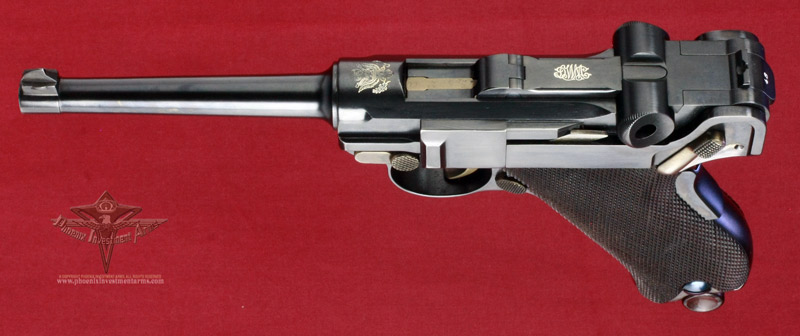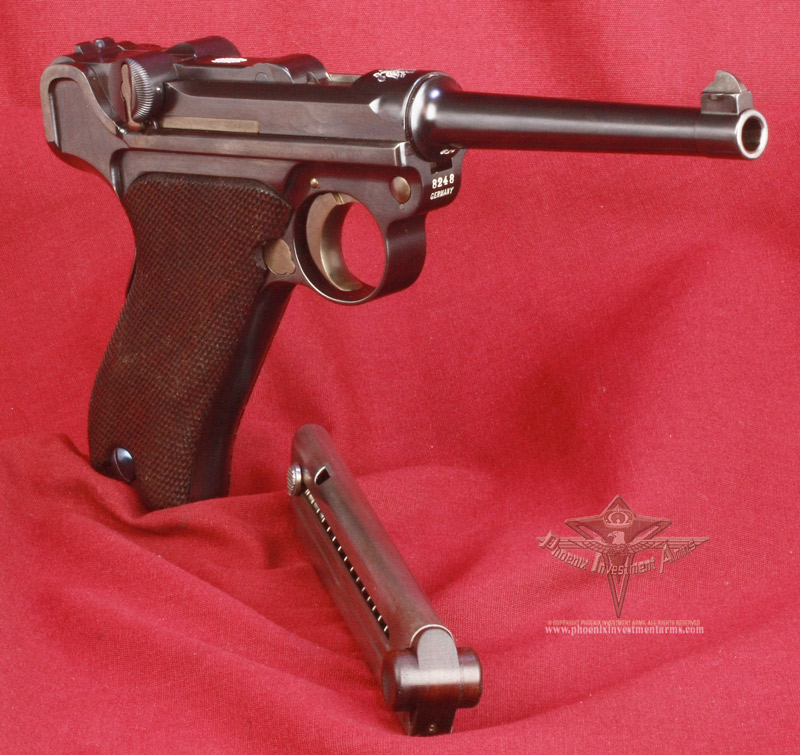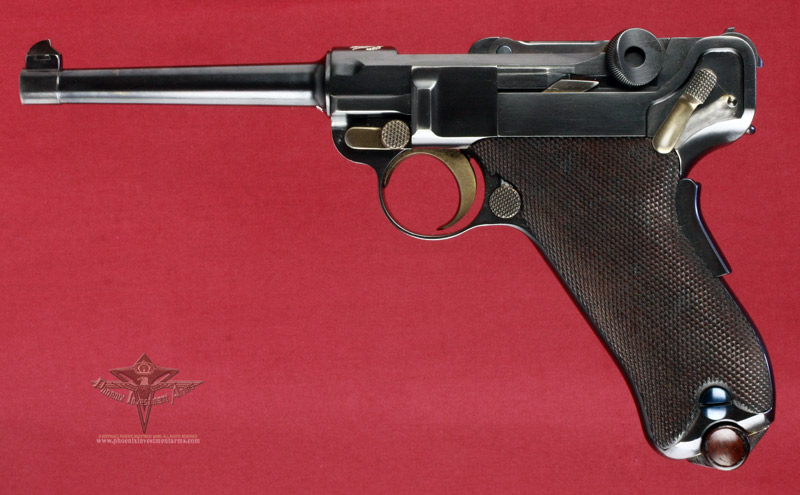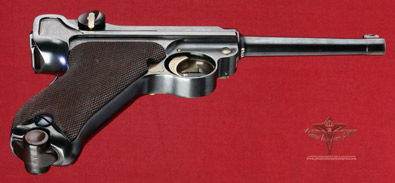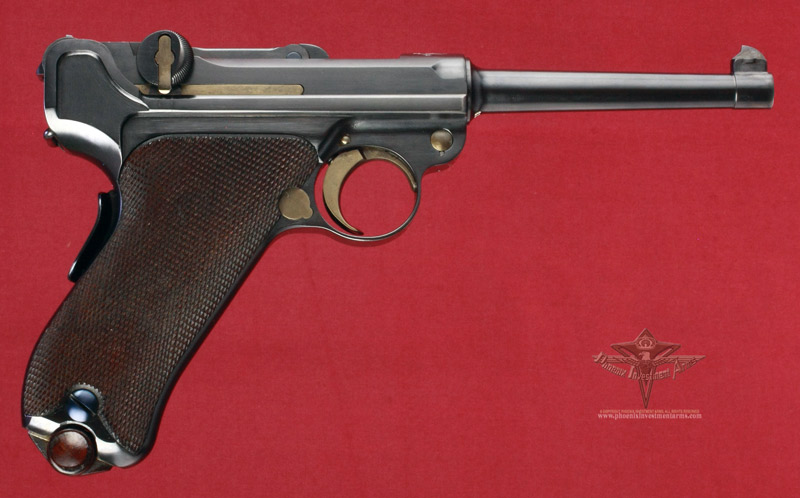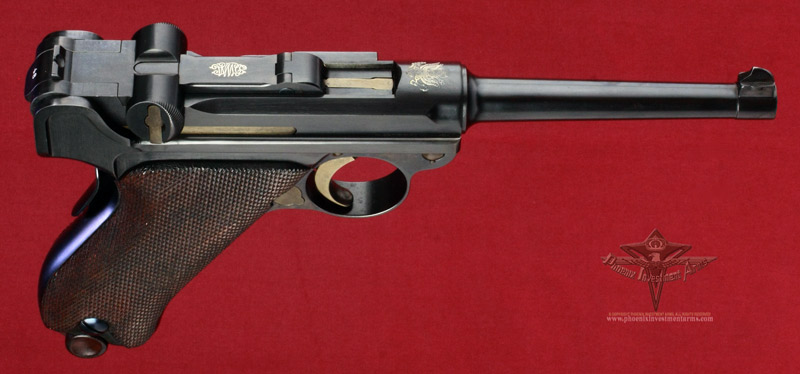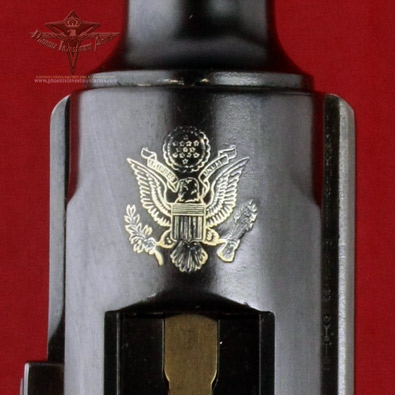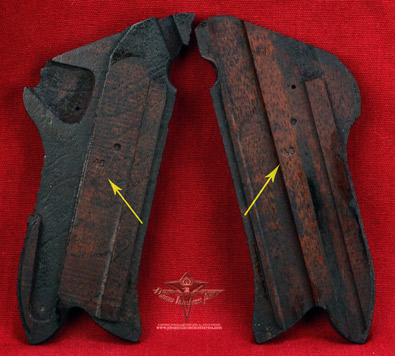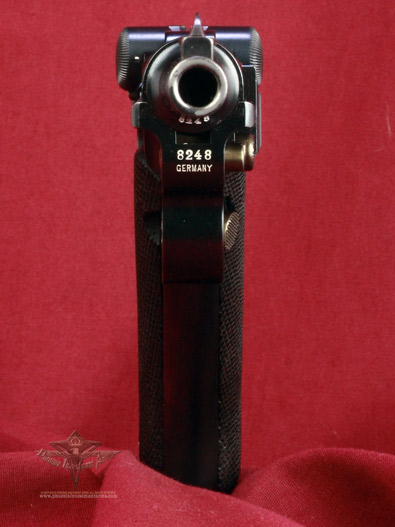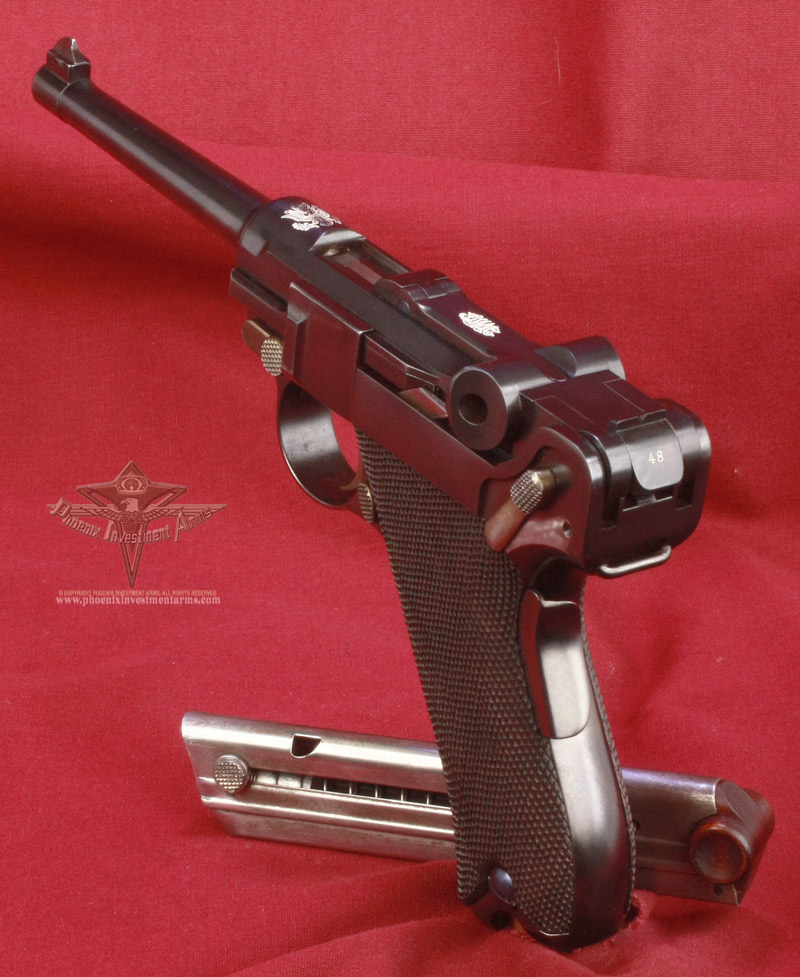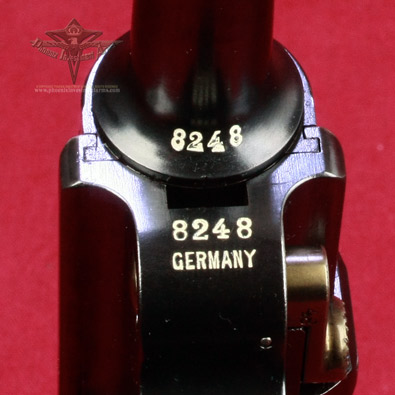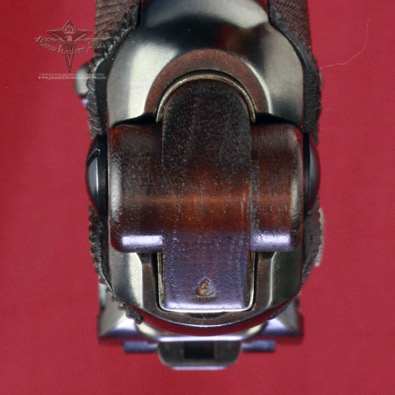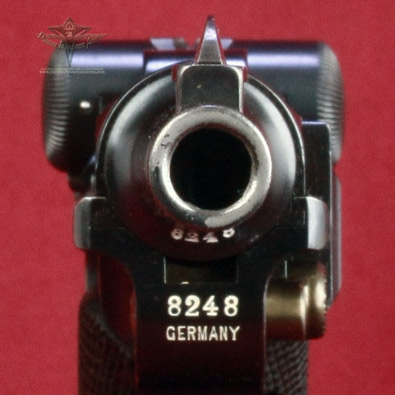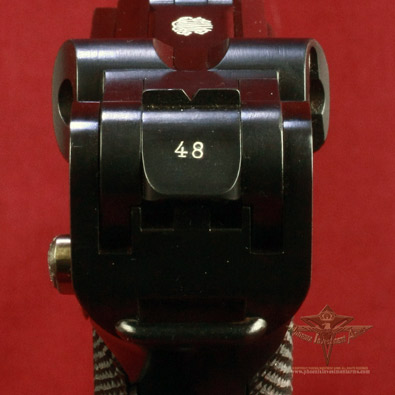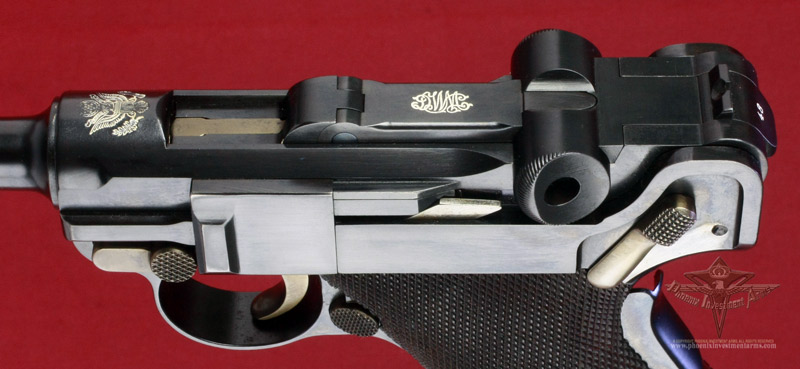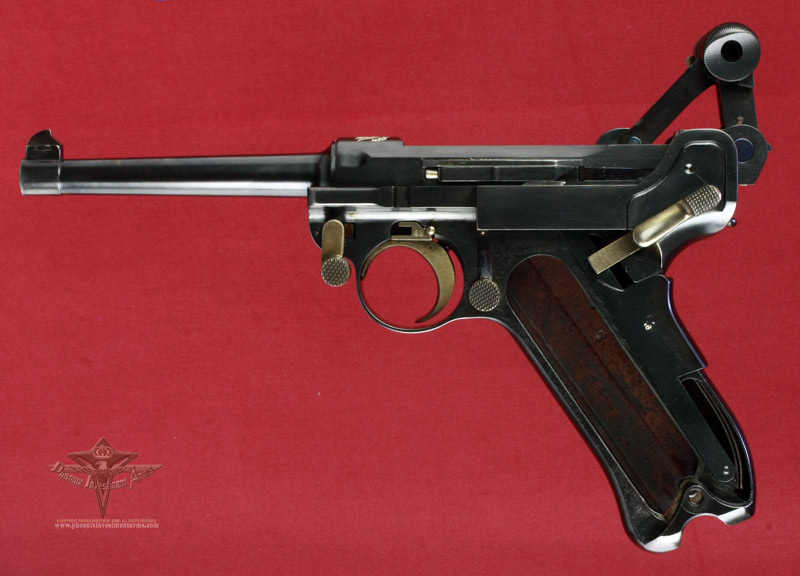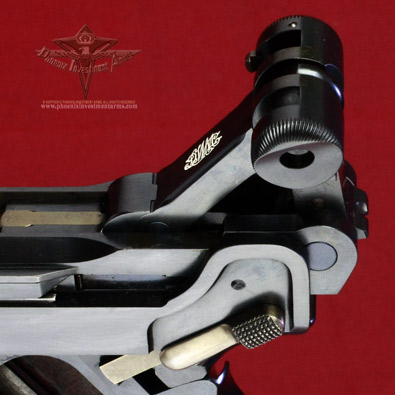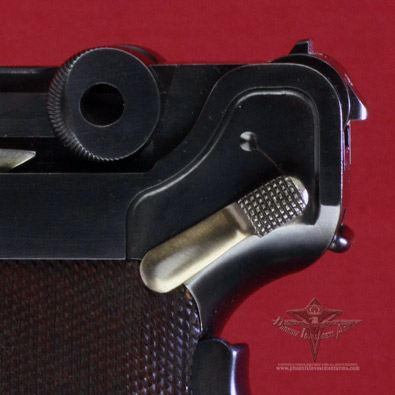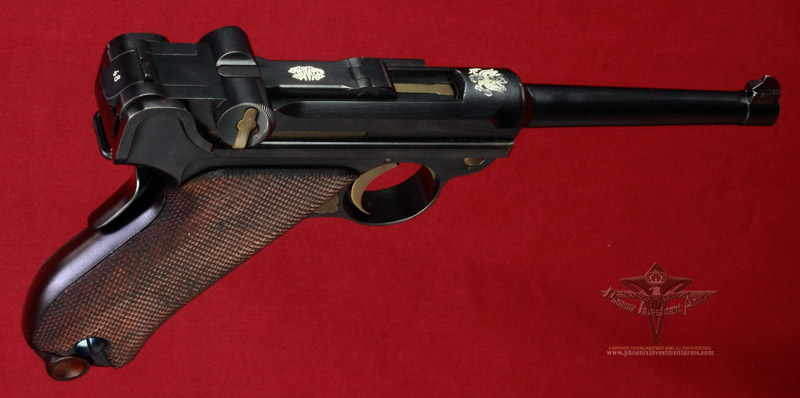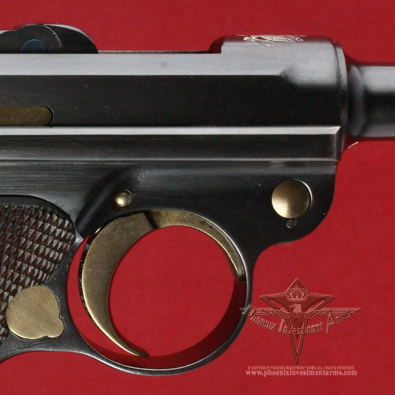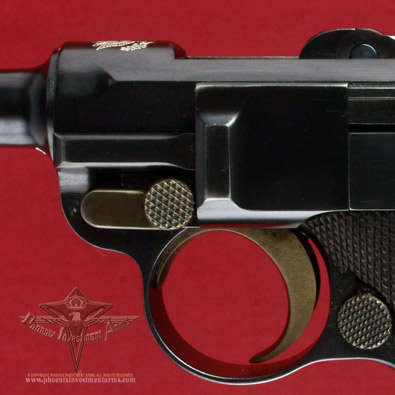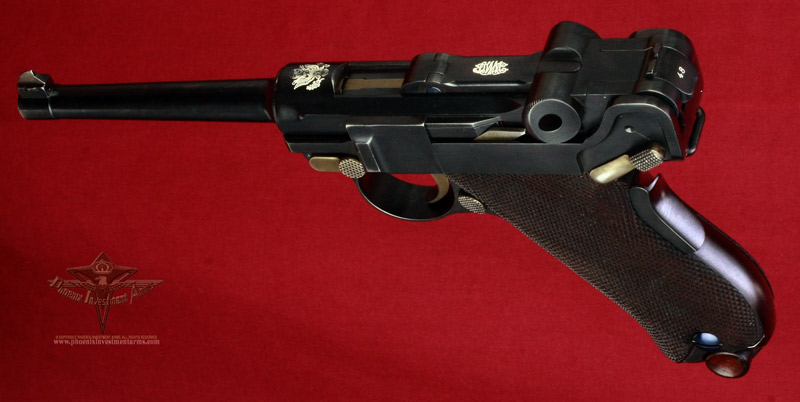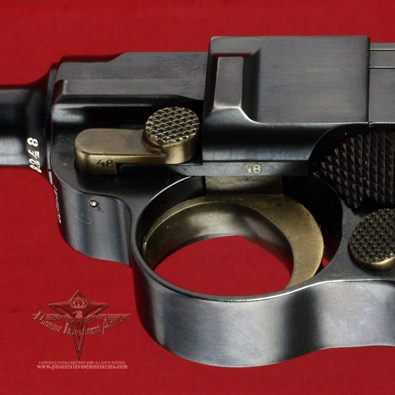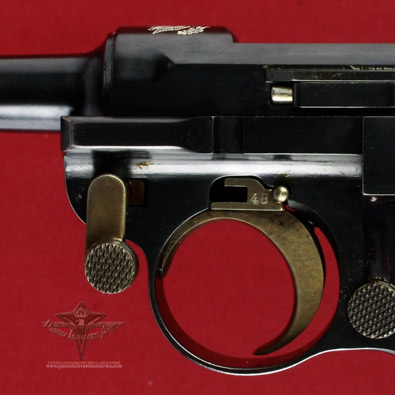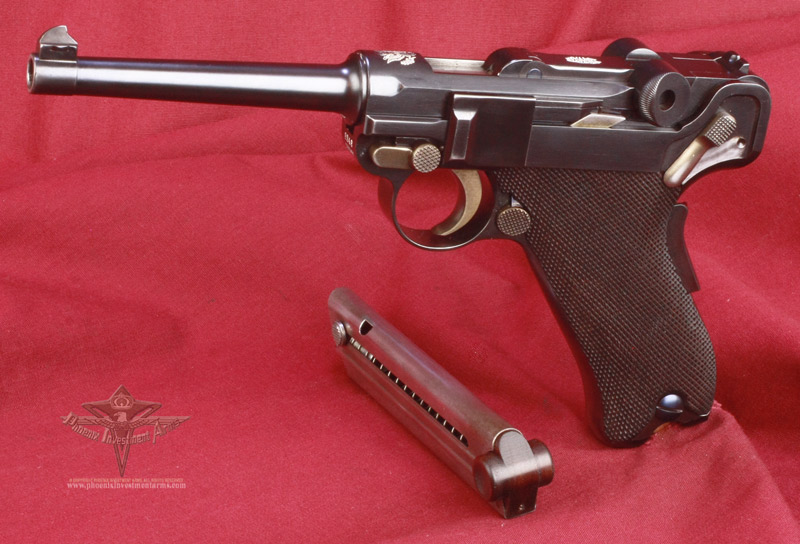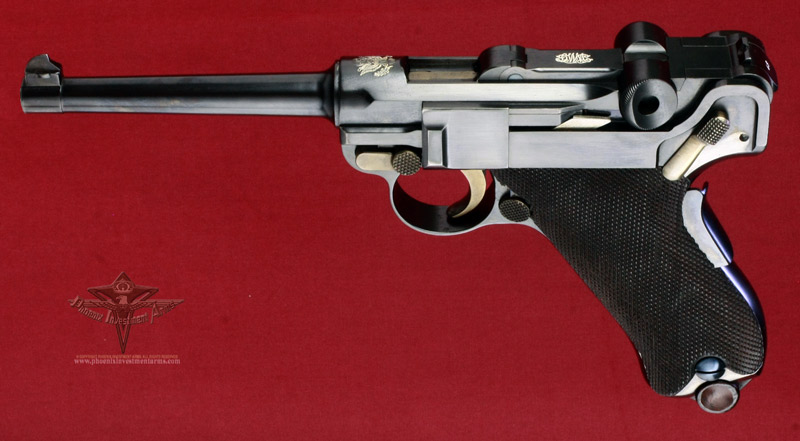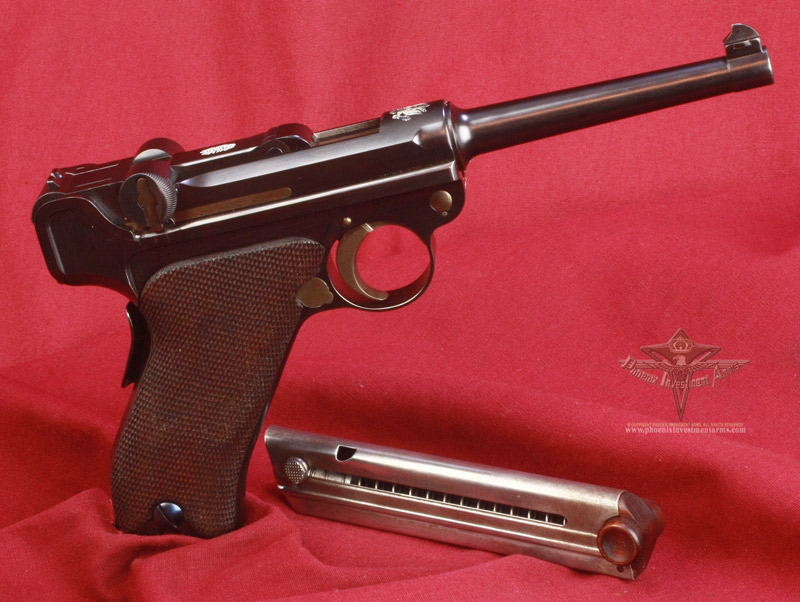|
|
|
This is a 1900 Model, 7.65mm (.30 Cal Luger) with the "old model" transitional long frame with a Type II thumb safety and is not stamped but is polished under the safety and the extractor is the leaf type. The Luger has a serial numbered grip squeeze safety. There is an "American Eagle" from the US Great Seal over the Chamber and the DWM (Deutsche Waffen-und Munitionsfabriken AG) on the first toggle link. (1576) |
|
|
|
One of the things "known" about Lugers is that international law required guns made for commercial sales must show the country of origin. Usually this was done on the early Lugers by placing "Germany" on the front of the frame under the serial number. This gun exhibits this 'commercial' designation with the "German" export mark required by customs for any weapon entering the US. This is one of the classic Lugers exported by DWM to the United States for commercial sales. |
|
The 1900 American Eagle Luger is in good company. Buoyed by their success with the Swiss chamber markings as a marketing tool DWM set across the globe with multiple country stamps among the most notable are the Swiss, American Eagle, Russian, Bulgarian, Chilean, Portuguese, Serbian, in addition to the blank chamber. Some of these were "salesman samples" attempting to persuade the desired country to adopt the Parabellum. |
